Pilotwings 64
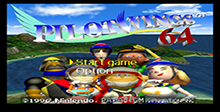
| a game by | Nintendo |
| Genre: | Racing |
| Platform: |
|
| Editor Rating: | 8/10, based on 11 reviews, 18 reviews are shown |
| User Rating: | 9.0/10 - 2 votes |
| Rate this game: | |
| See also: | Flight Games |
The Super NES classic Pilotwings had a lot going for it when it was launched alongside the 16-Bit system five years ago. The game gave console players their first chance to soar above realistic-albeit completely flat-terrain. And the goal of Pilotwings, to pass a series of flight tests using varied aircraft (or in the case of the skydiving lessons, no aircraft), was a unique concept amidst the hundreds of side-scrolling games that clogged store shelves at the time.
PilotWings 64 isn't so fortunate. Gamers who own next-gen consoles have by now grown accustomed to playing in highly detailed game environments, and most Nintendo fans have already beaten Pilotwings. The game just ain't all that novel anymore.
PilotWings 64 will have to pull off some spectacular visual stunts and offer brand-new gameplay challenges if it's to top its 16-Bit predecessor.
Fortunately, the game has enough flash (thanks to the power of the Nintendo 64) and style (note the new combat and photography missions) to come across as a worthy update to the original.
Although PilotWings 64's graphics aren't light-years ahead of what the other consoles can dish out, they are a phenomenal step forward. The game's texture-mapped terrains look lush and realistic, and they slip smoothly beneath the player's aircraft (although minute slowdown does occur during flight through polygon-heavy environments, such as cities.) Only graphics generated by high-end PCs and multimillion-dollar flight simulators surpass the visuals found in PilotWings 64, which is appropriate, considering that the game's developers also designed flight simulators for the military (see sidebar).
Flight in PilotWings 64 takes players above four islands: two tropical, one arctic and the fourth as large as a nation. Depending on which flight lesson they choose, players will swoop over cities, waterfalls, mountain peaks and other sights and structures. Much of the terrain is animated, too: smoke pours from chimneys atop farm houses, the Space Shuttle lifts from its launch pad and many other animations-complete with sound effects-liven up the islands. The game's world extends nearly to the horizon, and pop-up of terrain features is rarely noticeable-but it does exist. When flying at high altitudes, players will see distant buildings and land features pop into view at the fringes of the fog-enshrouded horizon.
While its graphics are new-and-improved, PilotWings 64's goal is no different from that of the Super NES version: Players must earn their wings in a series of increasingly more difficult flying tests. Points are given based on how well players do in each lesson, and high scores grant access to the game's later levels and bonus missions.
Unlike the original, however, PilotWings 64 doesn't end with with a helicopter gunship mission. Instead, players who pass every lesson get to don the birdman wings and go on a sightseeing tour of the islands. Stars hidden throughout the game also grant the wings.
Another feature unique to PilotWings 64 is the option to pick from six different pilots each with his or her own body proportans that affect the flight characteristics of the aircraft. For instance, vehicles flown by skinny charac-ters-such as the lanky American Named Goose-lift into the sky easily, but their turning capabilities aren't as tight as aircraft flown by heavier pilots.
When players start the game, they can head skyward in three aircraft: the gyrocopter, the hang glider and the jetpack. The gyrocopter-sort of a smoke-belching combination between a helicopter and an airplane-is a new vehicle and takes the place of the first game's biplane. (No, PilotWings 64's developers haven't forsaken would-be skydivers; the parachute-among other things-becomes available in the game's bonus challenges.)
Early gyrocopter missions send pilots careening through rings that float at various heights (some under bridges), but later lessons have later lessons have pilots doing more things than just flying through rings. The gyrocopter is now armed with missiles, which pilots must use to destroy mission targets. In most lessons, the targets are either hovering balloons or bull's eye-adorned ground-based signs. In two missions the pilot must blow away a marauding robot, which dashes madly across the gyrocopter's flight path while the pilot tries to nail it with five missile hits. This task is made all the more difficult by the robot's tendency to hurl boulders at the gyrocopter.
The hang-glider lessons are more for the pacifist; instead of guns, the glider is equipped with a camera. Photo missions begin by showing pilots a list of objects they must find and photograph, such as a ship or fountain. Players will have to maneuver close enough to the objects so they can take pictures from the same distance and angle as the photos shown at the beginning of the mission. Points are awarded based on how closely the pilot's photos resemble the mission ones.
The missions bring up a novel feature of PilotWings 64-the game's photo album. After pilots have finished snapping pictures, they can stick the photos in an album that's saved along with the player's progress. The album holds six pictures; which players can view later to relive their sight-seeing adventures.
Other hang glider lessons are akin to those in the first Pilotwings; players will have to guide the glider through rings or reach a certain altitude by using the thermal currents, the aircraft's only source of lift.
Jetpack missions also send pilots chasing after rings, but these targets are a bit trickier than in other lessons. Some rings are tucked away under rock overhangs, while others have to be passed through in a certain sequence and in a certain amount of time. Other jetpack missions have players seeking out and dropping onto stationary targets that refuel the gas-hogging vehicle, a task made easier by the jetpack's stabilizing feature (a tap on the Z button brings the jetpack to a dead hover). The stabilizer sucks fuel, however, and pilots who take too long touching down will quickly run out of gas and crash. Still other jetpack lessons send pilots out to round up a bouncing ball and guide it to a target zone.
Since the jetpack is a vertical-takeoff aircraft, it grants more freedom to explore than the game's other vehicles. Pilots will need this freedom, too, since one mission requires them to navigate through a narrow and twisting cave. Each bump against the cave wall is punished by a two-point deduction from the pilot's mission score.
The criteria used to determine successful missions varies with each vehicle. For instance, during gyrocopter missions, pilots earn points for flying through all the rings and blowing up every target, but they're also graded on how quickly they flew the mission and how accurate they were with the missiles. Since no successful mission ends with a crash landing, pilots earn points for how well they bring their aircraft back to Earth.
PilotWings 64's missions progress through four levels of difficulty, and players can move on to the next level only by earning bronze wings or better in each of the current level's lessons. If they're good enough to garner silver or gold wings in each lesson, pilots earn access to the game's bonus missions. These missions have players being shot out of a cannon, skydiving, bouncing about on a springy pair of shoes called Jumble Hoppers and gliding with the bird wings.
It's not easy to score high enough to reach all of the bonus missions; PilotWings 64 is much more challenging than its Super NES predecessor. Not only do later missions dole out more difficult challenges, they also demand precise flying and perfect landings. To make matters even more difficult pilots have to contend with variable weather, fierce winds, turbulence and missions that take place during all hours of the day and night.
Yet these pilot-unfriendly conditions don't sap any fun from the game. They only increase PilotWings 64's already high level of realism and make for a game that will absorb more of the player's time than the 16-Bit original ever did.
Download Pilotwings 64

System requirements:
- PC compatible
- Operating systems: Windows 10/Windows 8/Windows 7/2000/Vista/WinXP
Game Reviews
Those magnificent men (and girls) in their flying machines...
Can there be a game with more of that crucial pick-up-and-play appeal than the dazzling Mario 64? Think about it. If you have ten minutes before you have to be somewhere, that kind of time isn't going to get you anywhere in Mario's world, is It? It usually takes way longer than that to complete a level, but not with PilotWings. Even if you dont make it, you can play through a full test from beginning to end within ten minutes. That is the reason for PilotWings being more friendly and less daunting. Nintendo themselves must have great faith in this title, if only because the Japanese and American launches of the N64 were accompanied by just two games: Mario 64 and PilotWings 64.
Take Flight
The challenges in PilotWings are set In the skies above four beautiful islands, flying in Hang Gliders and Gyrocopters or blasting around using the Rocket Belt. As Is the custom, farther weird and wonderful forms of flight become available with the completion of certain tasks, but most of your time will be spent In the air with one of the Initial three.
The idea is to graduate from the lowest classes for each vehicle to the top. In order to do this, you are set various tests which you must perform with each of the craft around the Islands, and these are usually simple things like flying through rings in the Gyrocopter, or photographing something while flying the Hang Glider. The differences In control between the Gyrocopter, Hang Glider and Rocket Belt are huge though, and each will take some considerable time to master.
Beginning with the Gyrocopter, the best way to learn to pilot it well Is to have a good concept of how it works. The little propeller at the rear Is what controls your forward speed, while the big propeller above the pilot acts more like the wing of a plane. The A button controls how much power goes to the back propeller, while the Control Stick moves the rudder and flaps at the back in full analogue beauty.
The innovative analogue pad that comes as standard with the N64 lends itself so well to flying this light aircraft, and after a little practice the degree of fluidity which you can achieve in flight is amazing. The limitless supply of onboard missiles are still available on levels without anything to shoot, so you can just fly around launching them at boats and buildings if it takes your fancy.
If you're in any doubt about the power of the Nintendo 64, just let your jaw hit the floor as you gaze at the scenery which passes slowly and smoothly below you during flight. There is simply no pixelation to be seen, and the ground only distorts slightly if you land and stare at it -not something you need to do.
Walking in the Air
The Hang Glider is powered in a very different way: just like the real thing, you have to depend on certain airflows to provide sufficient lift to keep you airborne. To make this possible in PilotWings 64, creator Paradigm has made circular columns of warm air visible on both your radar and in the playing environment, and you sail into these zones to lift the Hang Glider higher in the air before it starts to fall slowly and silently again. There is a whole different feel to piloting the Hang Glider as opposed to the Gyrocopter, particularly because there is no engine noise, and obviously you are flying at a greatly reduced rate. A more relaxed, peaceful tune plays as you fly too, and enhances the airy, floating sensation.
All you are ever required to do when flying the Hang Glider is guide it through rings or photograph something, sometimes both on the same level, and the aerial photography Is made simple for you. Just hold down the Z button and the red frame appears. When you let go of the button, whatever was visible at that time within the red border will be on your film. You get six pictures per test Scoring is awarded on how close your pictures are to what the message at the beginning of the test said was your aim. The most difficult part of the Hang Gliding experience however is landing the damn thing, and getting the perfect landing can be a real headache. More on this in our guide over the next few pages.
Control is as you would expect, but you need to take care not to make the glider lose altitude too quickly; as you can't be saved unless you can get to the next warm updraft. Gently banking by just moving the Control Stick a little off center, and turning shallow is the way to do it.
Winter Breeze
The most challenging way to fly Is with the Rocket Belt though. The control is like nothing you've ever experienced before, and you are bound to knock against a few buildings until your confidence increases. Moving the control stick left or right causes your pilot to rotate in that direction, and moving it up or down tilts the twin rockets forward or back. There are similar tests to the other vehicles In that you sometimes have to manoeuvre through the usual rings, but things can get far more dangerous with the Rocket Belt. For a start, the rings will often be situated in more confined areas, like between the buildings of a city, and the odd controls don't make it easy to avoid touching the ground every once in a while, and so scraping two points each time off of your final score. You even end up having to navigate your way through an underground tunnel that cuts through one of the islands, and it's the kind of journey that has your heart rate speeding and your hands sweating. On later levels you are required to push a huge ball around the scenery by bumping into it, trying to roll it towards the defined target elsewhere on the island, and for this you really need to master the quirky controls and learn to hover without using up too much fuel.
Birdman Of Alcatraz
The best asset which PilotWings 64 has is the immense freedom offered as you fly around these great landscapes, exploring the area for as long as there's fuel in the tank. A trip on the Little States island (a scaled down version of the USA as the name suggests) can keep you enthralled for long periods of time, buzzing such faithfully reproduced details as the Seattle Monument, the Statue of Liberty just off little New York, or the launching space shuttle at Cape Canaveral.
With moments of both total tranquility and frantic action, PilotWings 64 is an excellent game to accompany your new super console, and although it's pretty, prolonged playing has shown that it's not just a looker.
Flights Of Fancy
Birdman
If you can find the right star hidden near the coast on one of the islands, you will be given the Blroman mode as an extra game! Fly around, exploring for an unlimited amount of time, not constrained any longer by things like fuel or even wind - just flap!
Cannonball Run
One of the more amusing bonus games included is the cannonball game. Pick a pilot, and fire him or her out of a huge cannon! The idea is to aim for the bullseye on the massive targets on each stage, but remember to allow for things like wind and gravity!
The Cast
Due to their different sizes, each of the six characters react differently to your control they can be split up into small, medium and, well, fat.
Lark and Kiwi
Hang Guder: Because they're so small and light, they react sensitively to the control stick.
Rocket Belt: They are not so heavily affected by inertia and momentum as the others, but get blown around by the wind rather easily.
Gyrocopter: Their size doesn't bring them any real pros or cons on the gyro
Goose and Ibis
Hang Glider: Not so small as to have hypersensitive reactions, not big enough to be sluggish. somewhere in between.
Rocket Belt: As they're heavier, the wind doesn't affect them but they suffer from bad inertia.
Gyrocopter: The best pair for Gyrocopter missions, very easily manouvrable
Hawk and Robih
Hang Guoer: These chunky OVERFED pilots ARE slow to REACT on the Hang Glider. Go for Lark or Kiwi for these missions.
Rocket Belt: Having beefed up Rocket Belts to compensate, they have average performance and reactions.
Gyrocopter: Like the Hang Glider, they are fairly difficult to fly with because of their size. no more cookies.
Playing Guide
Gyrocopter
The timer on the gyrocopter tests will not start until you start moving by pressing a, so there's no rush to start. The rudder will not actually move either until you leave the ground, so if you want to head somewhere immediately upon takeoff you can push the stick hard to one side as you accelerate along the runway without fear of just trundling onto the grass. This is often the best way to begin the metal horizon mission (test 2 in class b) where you are asked to destroy all the targets and land. the first targets are very close to the end of the runway and so you can often overshoot them straight away, using up valuable time having to fly back to try again.
whenever you are playing a mission that requires you to shoot something, either balloons, targets or meca hawk, it is advisable that you switch to the inside view (press r) to get the gyrocopter out of your field of vision while aiming.Because you have no sense of the size of your gyro when using the inside view you will probably find it much easier to make it through difficult spaces such as under bridges if you switch to the external view. As for landing, you simply don't want to attempt it without being able to see the wheels, especially as landing impact is one of the areas you are being assessed on. A rough landing with any of the vehicles can mean anything from losing a few points for landing accuracy and Landing impact to a bouncing spinning death.
Rocket Belt
To be honest, you're not going to pick up the nuances of the Rocket Belt as quickly as the Hang Guder and Gyrocopter, but stick with it. It's important to learn how to instinctively switch between the three types of power when it's required. Use the z button to come to a halt if you're headed for a building or mountain side too fast, but don't rely on it unless you have to - it burns fuel at an obscene rate, meaning you could be left quite literally high and dry. The b button is very handy too, being a softer, less fuel consuming version of the fiery a button type of propulsion. Use b to float through tight spaces, and the a button for travelling larger distances or to push you high in the air if your going to hit the ground and lose points.
Another tip for success in the Rocket Belt stages is to change the camera angles to get a better idea of how close you are to certain rings or hovering landing spots. press the c up button twice to get a view which is almost directly looking down on your character, and you'll find your accuracy increasing fairly sharply in these situations.
Meca Hawk
At take-off, try to keep from going too high on the meca Hawk levels. An altitude of about 30 meters (above the ground, not sea level) is about perfect for your attack. if you fly in too high, problems occur when you reach meca himself, like you will be forced to point the nose of the gyrocopter down towards the ground to get a decent shot at him, meaning you will be constantly risking a crash because you are hurtling at the ground so often. The Gyrocopter is generally happier and easier to control when it's levelled out anyway, so bear this in mind. Because he is so tall, if you fly level at around 30 meters above the ground your crosshair will be over him when you hold the z button, so you needn't worry about height, only banking left and right to get him in line. When you think you have a good shot at him, always remember to fire off two missiles as quickly as possible after one another. You'll be surprised how many times you can catch him twice using this technique before he yells and runs away. Getting two shots in on a single flyby will greatly reduce the amount of time you have to spend in the air too, so you can land much sooner and pick up those time points! The most ukely way to rapidly shoot meca twice or more is if you manage to come in behind him, bearing in mind that perfect 30 meters altitude, and shoot him in the back. when the first shot hits, he'll raise his arms and run away, but normally he'll run forwards, so the second missile should catch him too before he runs out of range.
Those magnificent men (and girls) in their flying machines...
Can there be a game with more of that crucial pick-up-and-play appeal than the dazzling Mario 64? Think about it. If you have ten minutes before you have to be somewhere, that kind of time isn't going to get you anywhere in Mario's world, is it? It usually takes way longer than that to complete a level, but not with PilotWings. Even if you don't make it, you can play through a full test from beginning to end within ten minutes. That is the reason for PilotWings being more friendly and less daunting. Nintendo themselves must have great faith in this title, if only because the Japanese and American launches of the N64 were accompanied by just two games: Mario 64 and PilotWings 64.
Take Flight
The challenges in PilotWings are set in the skies above four beautiful islands, flying in Hang Gliders and Gyrocopters or blasting around using the Rocket Belt. As is the custom, further weird and wonderful forms of flight become available with the completion of certain tasks, but most of your time will be spent in the air with one of the initial three.
The idea is to graduate from the lowest classes for each vehicle to the top. In order to do this, you are set various tests which you must perform with each of the craft around the islands, and these are usually simple things like flying through rings in the Gyrocopter, or photographing something while flying the Hang Glider. The differences in control between the Gyrocopter, Hang Glider and Rocket Belt are huge though, and each will take some considerable time to master. Beginning with the Gyrocopter, the best way to learn to pilot it well is to have a good concept of how it works. The little propeller at the rear is what controls your forward speed, while the big propeller above the pilot acts more like the wing of a plane. The A button controls how much power goes to the back propeller, while the Control Stick moves the rudder and flaps at the back in full analogue beauty.
The innovative analogue pad that comes as standard with the N64 lends itself so well to flying this light aircraft, and after a little practice the degree of fluidity which you can achieve in flight is amazing. The limitless supply of onboard missiles are still available on levels without anything to shoot, so you can just fly around launching them at boats and buildings if it takes your fancy.
If you're in any doubt about the power of the Nintendo 64, just let your jaw hit the floor as you gaze at the scenery which passes slowly and smoothly below you during flight. There is simply no pixelation to be seen, and the ground only distorts slightly if you land and stare at it — not something you need to do.
Walking in the Air
The Hang Glider is powered in a very different way: just like the real thing, you have to depend on certain airflows to provide sufficient lift to keep you airborne. To make this possible in PilotWings 64, creator Paradigm has made circular columns of warm air visible on both your radar and in the playing environment, and you sail into these zones to lift the Hang Glider higher in the air before it starts to fall slowly and silently again. There is a whole different feel to piloting the Hang Glider as opposed to the Gyrocopter, particularly because there is no engine noise, and obviously you are flying at a greatly reduced rate. A more relaxed, peaceful tune plays as you fly too, and enhances the airy, floating sensation.
All you are ever required to do when flying the Hang Glider is guide it through rings or photograph something, sometimes both on the same level, and the aerial photography is made simple for you. Just hold down the Z button and the red frame appears. When you let go of the button, whatever was visible at that time within the red border will be on your film. You get six pictures per test. Scoring is awarded on how close your pictures are to what the message at the beginning of the test said was your aim. The most difficult part of the Hang Gliding experience however is landing the damn thing, and getting the perfect landing can be a real headache. More on this in our guide over the next few pages.
Control is as you would expect, but you need to take care not to make the glider lose altitude too quickly, as you can't be saved unless you can get to the next warm updraft. Gently banking by just moving the Control Stick a little off center, and turning shallow is the way to do it.
Winter Breeze
The most challenging way to fly is with the Rocket Belt though. The control is like nothing you've ever experienced before, and you are bound to knock against a few buildings until your confidence increases. Moving the control stick left or right causes your pilot to rotate in that direction, and moving it up or down tilts the twin rockets forward or back. There are similar tests to the other vehicles in that you sometimes have to manoeuvre through the usual rings, but things can get far more dangerous with the Rocket Belt. For a start, the rings will often be situated in more confined areas, like between the buildings of a city, and the odd controls don't make it easy to avoid touching the ground every once in a while, and so scraping two points each time off of your final score. You even end up having to navigate your way through an underground tunnel that cuts through one of the islands, and it's the kind of journey that has your heart rate speeding and your hands sweating. On later levels you are required to push a huge ball around the scenery by bumping into it, trying to roll it towards the defined target elsewhere on the island, and for this you really need to master the quirky controls and learn to hover without using up too much fuel.
Birdman of Alcatraz
The best asset which PilotWings 64 has is the immense freedom offered as you fly around these great landscapes, exploring the area for as long as there's fuel in the tank. A trip on the Little States island (a scaled down version of the USA as the name suggests) can keep you enthralled for long periods of time, buzzing such faithfully reproduced details as the Seattle Monument, the Statue of Liberty just off little New York, or the launching space shuttle at Cape Canaveral.
With moments of both total tranquility and frantic action, PilotWings 64 is an excellent game to accompany your new super console, and although it's pretty, prolonged playing has shown that it's not just a looker.
The title that helped give players their first taste of vertigo on the Super NES is also the same title that's in the lineup for the introduction to the Nintendo 64. The graphics clearly have been improved over the original and include some impressive stage backgrounds. For example, there is an interesting addition to the famed Mt. Rushmore, and a flyby through restricted Ellis Island airspace is also waiting to be explored.
Flying crafts consist of a one-person gyrocopter, a rocket pack (as in the original) and many more. Whichever way you look at it, Pilotwings for the N64 will be hooking players to the intense action all over again. Keep an eye out for more information as it becomes available to us here at EGM. As the release date and the E' show come closer, more information is bound to surface on this cool game.
- MANUFACTURER - Nintendo
- THEME - Flight sim
- NUMBER OF PLAYERS - 1
People say:
The second game to be seen on the N64. I'm wondering if before long all of the games coming out for the N64 will have spectacular graphic. Then games like Mario 64 will have set a standard of sorts. If this is the case, PilotWings 64 is another graphically impressive title for the new 64-Bit wonder. The game's a lot of fun to play with the different vehicles to control and the bonus rounds. The problems that bugged me were the slight choppiness when viewing large chunks of land and the weird camera views when using the jet pack. It's a great pick if you liked the original, besides being incredible for a first-gen. cart.
Honestly, hasn't everyone wanted to feel the sensation of flight at one time or another? PW64 does a good job, but for me, it didn't have the same magic that the original had. Don't get me wrong, the graphics were tremendous, and the smoothness of flight was unparalleled. All I see here, however, is a visually updated version of the old Pilotwings. That's great, but I've already played it a while ago on the Super NES. A couple of new vehicles and missions kept my interest, though. The levels were large and impressive, but a few more bright colors could've liven up the scene. All around, it's a solid title that'll be worth your cash.
I loved PW64 95 percent of the time, but for the other 5 percent, I swore at it and tossed my controller down in frustration. This game gets difficult in the later stages. Fortunately, you don't have to earn a perfect score in every flight lesson to fly all the aircraft. PW64 is every bit as fun as the Super NES original, only with graphics that are above and beyond anything the other next-gen consoles can pump out. PW64's four islands are huge and full of caves, cities and other nooks and crannies to explore, and it's easy to guide your aircraft through these areas with the analog stick. I only wish there were more combat missions.
The fun factor and the intensity of the original return to play an important part in the revised version. Players will find plenty of fast action as they rocket, float, hover and power their way through the various 3-D settings. The control is really good and works well with the ergonomic N64 controller, allowing you a gentle touch where inches count. The graphic are really complete and the sound is fantastic even though it is on the quiet side. The main features that lift this title into the higher ranges for me is the interactivity between the player and such objects as caverns as well as flaming smoke stacks.
The original flying title that helped launch the Super Nintendo is scheduled for release on the Ultra 64. The original 16-Bit version used previously unseen scaling and rotation abilities to impress players with the ability of the machine's processing power. And what better way to introduce their newest system than to have a repeat performance of their premier flight sim with an action feel. Pilot Wings 64 pushes past the original and gives the player a more realistic floating experience in a wide variety of flying vehicles that react as differently as they look. Different views, constantly changing scenery, in addition to the fast scaling are bound to make many players aware of a little problem they may have: motion sickness.
Smooth action, sharper visuals and hot 3-D effects are the major factor behind redoing the first flight game for the Super NES. Players are bound to get into the multiple scenarios that will challenge the aviation wits of even the most skilled pilots. Pilot Wings will contain flying crafts and a wide variety of terrain and a whole new world to explore. For example, some of the most popular landmarks in the country (like Mt. Rushmore) are there to be discovered. Bring it on!
A game that splits the office to this day. One camp argues that the ability to more or less set your own agenda provides near-infinite replay value. The other camp maintains that there isn't any real objective and that you just waft about over pretty landscapes. Since a member of the latter group edits the mag, guess which viewpoint is represented here?
Early N64 game where you fly various aircraft over well-detailed landscapes. Looks great, but it's all a bit slow and aimless.
If you fly far enough out to sea from an island, after 15-30 seconds you will see the back of the island that you fust came from in front of you This is useful when you're short of fuel or time.
A supreme example of how to harness the N64's immense potential. Up. up and away.
Pilotwings helped usher in the Super NB many moons ago, so it seems fitting that it will also fly wingman to the Nintendo 64. As in the original, you fly through obstacles to hit the bull's-eye landing pad. You'll choose from six characters and a variety of aircraft, including a personal rocket-pack, a hang glider, and a gyrocopter. Paradigm Simulations, best known for its non-gaming vehicle sims for such outfits as the U.S. military, designed the game. Yes, combat may be included in this version.
The sequel to the early hit SNES game, Pilotwings 64 challenges you to maneuver several aircraft through tricky obstacles and patterns, then nail the landing on a bull's-eye target. Pilots will also have to take down targets with missiles. and of course elemental forces, such as surging wind currents, pose additional threats. To conquer the courses, gamers can choose from six flyboys and various aircraft, including a rocket pack, hang glider, and gyrocopter. These fresh images show off snazzy 3D seascapes and landscapes, including an amusement park, Manhattan, the Statue of Liberty, and the Grand Canyon .
As it was for the Super NES launch, Pilotwings will also be available for the Nintendo 64 premiere in September. This new version of the flying simulation, called Pilotwings 64, gives you three aircraft to fly-a rocket pack, a gyrocopter, and a hang glider-and 27 courses. The game also has bonus missions, including a spring shoes jump and even a human cannonball simulation! New features include multiple camera angles that you can choose between while flying and the ability to take pictures. Pilotwings 64 uses the analog joystick on the Nintendo controller for a "real" flight-sim experience.
Afamiliar friend from the glory days of the SNES returns to help launch the Nintendo 64 with dazzling graphics and captivating gameplay. Pilotwings 64's stunt-flying action lines up three cool craft on your runway: a hang glider, a rocket belt, and a gyrocopter. You have to earn your way into the cannonball, skydiving, jumble hopper, and Bird Man courses by winning a silver medal or better in the primary vehicles.
To secure top marks, you must execute exact landings, whiz through precariously placed rings, and peg bull's-eye targets with rockets. This spectacular game delivers furious fun not in the form of frenzied action, but rather in the joy of realistic flight and the white-knuckle challenge of precision flying.
ProTips:
- Land your hang glider perfectly by approaching the target low and fast. Put your feet down a few steps from the center.
- In the gyrocopter, hit the gas to increase maneuverability on ascents, but nail the brakes for tighter responses on turns and descents.
- Check the caves along the coast for stars that take you to the Bird Man flights.
- To overcome the hang glider's slow steering on this steep descent, immediately steer toward the next ring in line as soon as you're lined up on the one in front of you.
- If you lose control of your trajectory while flying the rocket belt, briefly hover (hit Button Z) to stabilize yourself.
- Use your first shot out of the cannonball to determine your aim and power, then fine-tune them with the second two shots.
Graphics
Breathtaking 3D terrain and gorgeously smooth animation will fulfill all your flying dreams. The lone flaw in these postcard-perfect graphics is the smattering of quirky, simplistic visuals, such as the cheesy whales and the odd-looking giant.
Sound
Each aircraft hums with impressively realistic sound effects, and the landscapes are packed with details like honking traffic and crashing waves. The repetitive music and kiddy voices, however, quickly grow old.
Control
You definitely won't need a pilot's license to master these outstandingly responsive controls. The slick analog joystick handles like a dream, supplying smooth, realistic maneuvering.
Fun Factor
Pilotwings 64's methodical, strategic gameplay won't interest hardcore action gamers for more than a few days. However, this immensely addictive stunt-flying game will permanently engross anyone who loves flight-based action and a fierce challenge.
The original Pilotwings was the game that first introduced us to the pseudo-3D/mode 7 capabilities of the SNES, and this followup promises to prove that the N64 can and will provide gamers with unprecedented depth of field. Fans of the original will be delighted to know that, with resident genius Shigeru Miyamoto on board, the same blend of realism and ease of play are virtually guaranteed.
The game is coming along beautifully, with scenic locales and little extras in the terrain.These extras include being able to see waves breaking on a beach and a huge Mario head on Mount Rushmore! There's an assortment of vehicles to choose from, like hang gliders, parachutes and gyrocopters, which should feature handling differences as well as other nuances.
The character designs not only look cool, but also affect the weight and handling of craft. Pilotwings 64 will be one of the games available at launch in September, along with Mario 64 and (hopefully) a bumper crop of titles like Ultra Killer Instinct, Cruisin' U.S.A. and Ultra Doom.
If you're wondering why Nintendo never released a sequel to Pilotwings (one of the best Super NES games ever), then wonder no more. Apparently it was waiting for a machine with the power to handle the most lovingly rendered backdrops you could ever imagine. Graphically speaking, Pilotwings is simply the most beautiful game ever designed for the home--and it's playable too.
This is the brainchild of Shigeru Miyamoto who, as I'm sure you're tired of hearing, was the genius behind Donkey Kong, Super Mario, etc.This time, though, Mr. Miyamoto had the help of a clever band of American programmers, in the shape of Paradigm Simulations. The combination of game-play and technical achievement is awesome. Pilotwings looks and feels like one of those exhilarating flying dreams, only this is one you never wake up from.
It's your chance to soar through the skies in a variety of contraptions, ranging from a quiet and soothing hang glider, to the fraught chaos of a gyrocopter. There's also a parachute, a rocketbelt, a birdsuit and even a human-firing cannon to choose from.Typically for a Miyamoto game, Pilotwings 64 is packed full of hidden surprises, all of which have to be accessed through near-impossible feats of skill (try landing the gyrocopter on the roof of a cruiseship).
The smooth graphics and realistic sound effects combine nicely with the analog controller to create an absorbing and, again, dream-like experience. If you want something a little more action-packed, Killer Instinct may be more your thing, but for a nice relaxing game, nothing is going to beat Pilotwings 64.
Blade and Barrel could be one of the hottest N64 games on the horizon. Although it's a relatively simple 3D shooter, the smooth graphics, awesome explosions and--get this--splitscreen game-play should make this a two-player treat of well-nigh epic proportions.
Early demos of the game show off the Nintendo 64's graphic potential, with super-fast, super-smooth and super-solid buildings being moved effortlessly around the screen. A choice of choppers and weapons will add to the variety, and Kemco promises that this will feature intense action never before seen in a 3D game. Nintendo's Starfox 64 should mount some strong competition there.
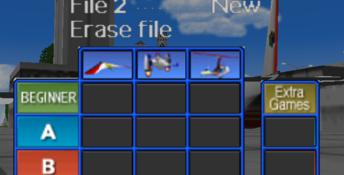
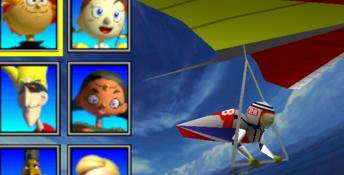
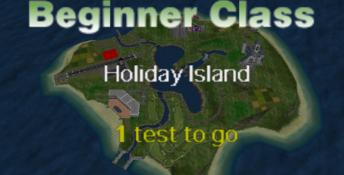

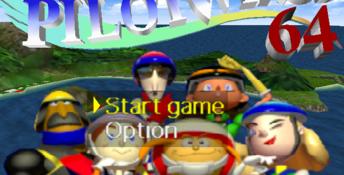
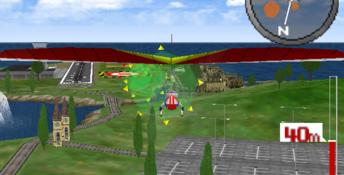
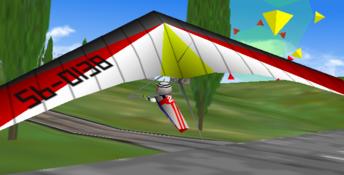
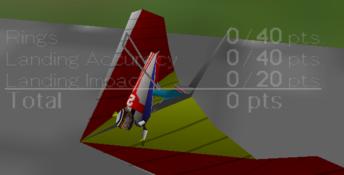
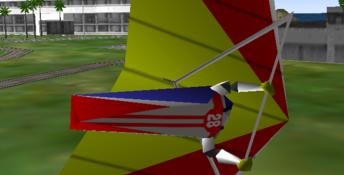

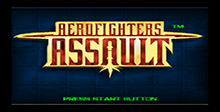 Aero Fighters Assault
Aero Fighters Assault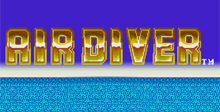 Air Diver
Air Diver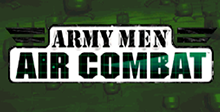 Army Men: Air Combat
Army Men: Air Combat
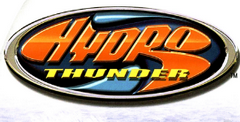 Hydro Thunder
Hydro Thunder